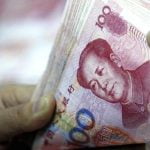China’s expansive overseas infrastructure lending through the One Belt One Road (OBOR) initiative could create new asset-quality risks for its banking system, Fitch Ratings warned.
Launched in 2013, the Xi Jinping-backed initiative aims to revive the ancient Silk Road and strengthen Chinese ties with more than 60 countries across Asia, Europe and East Africa through infrastructure, trade and investment.
The attraction to China is opening up vast areas of Central Asia that still retain trade links established centuries ago to routes in South Asia, Persia, Arabia and Africa, but now often lack the modern infrastructure needed to attract large-scale investment and trade.
But Fitch said this global project might be more about China’s strategy to extend its global influence, rather than meeting the infrastructure needs of countries involved or commercial logic.
China’s wide-ranging infrastructure projects with developing countries along the Silk Road link that are planned or underway, have an estimated worth of more than $900 billion, analysts at Fitch Ratings said in a report.
On Thursday, S&P Global ratings affirmed ‘AA-/A-1+’ sovereign credit ratings on China, while noting government moves to take on debts run-up by local government has “significantly reduced the banks’ credit risks, in our view.”
But even with the Asian Infrastructure Investment Bank (AIIB) to support the funding needs of the OBOR and China’s pledged $40 billion Silk Road Fund, most of the capital will likely come from Chinese policy banks or large commercial banks.
“One Belt One Road’s emphasis on large-scale capital-intensive infrastructure investments abroad is aimed at channeling surplus domestic savings away from less productive domestic uses and at relieving overcapacity pressures,” Jack Yuan, associate director at Fitch Ratings, told CNBC.
“Since the bulk of China’s savings are concentrated in the banking system, it is only natural that banks should provide most of funding for OBOR,” Yuan explained.
China’s three policy banks – Agricultural Development Bank of China (ADBC), China Development Bank (CDB), and the Export-Import Bank of China (Chexim) – have been given ‘A+’ ratings by Fitch Ratings, while its largest commercial banks have ‘A’ to ‘A+’ ratings.
Overseas loans from Chinese banks are estimated to be worth $1.2 trillion, of which a large portion has gone to financing infrastructure projects involving Chinese state-owned enterprises, the report said.
But these projects might fail to deliver expected returns as political motivations take priority over the commercial viability of some OBOR projects, the ratings agency warned.
Fitch added that Chinese banks have a poor track record of allocating resources efficiently, and policy banks tend to have poorer disclosure compared to commercial banks and non-Chinese development banks.
Problem loans and bad debts can also take a while to emerge as these infrastructure projects tend to have a long time frame, one analyst told CNBC.
“So, while initially banks and Beijing can handle loading up on exposure to these projects, it’s the longer term management of the loan book and risk tools used that will be key to ensure they don’t get bogged down with non-performing debt,” said Gavin Parry, managing director of Parry International Trading.
Countries with identifiable OBOR projects are Laos, Bangladesh, Azerbaijan, Pakistan, Tajikstan and Kyrgyzstan, to name a few.
The sovereign rating of countries under the OBOR umbrella can actually act as a guide to the creditworthiness of a particular project, although the ratings are of speculative grade, Fitch said.
source”cnbc”






